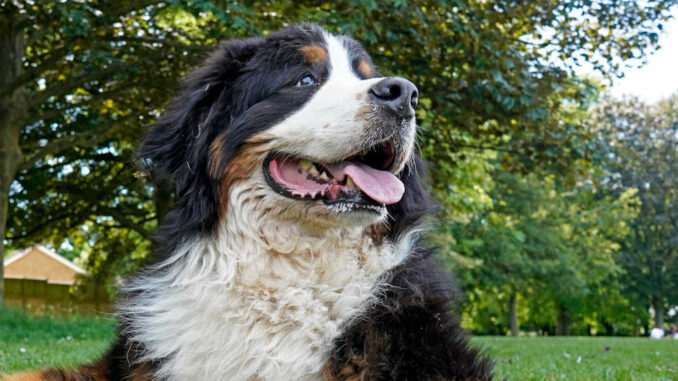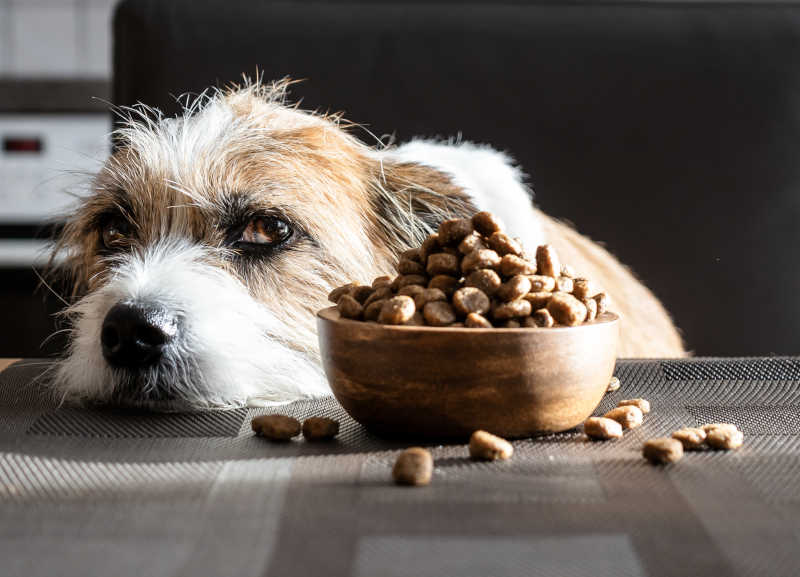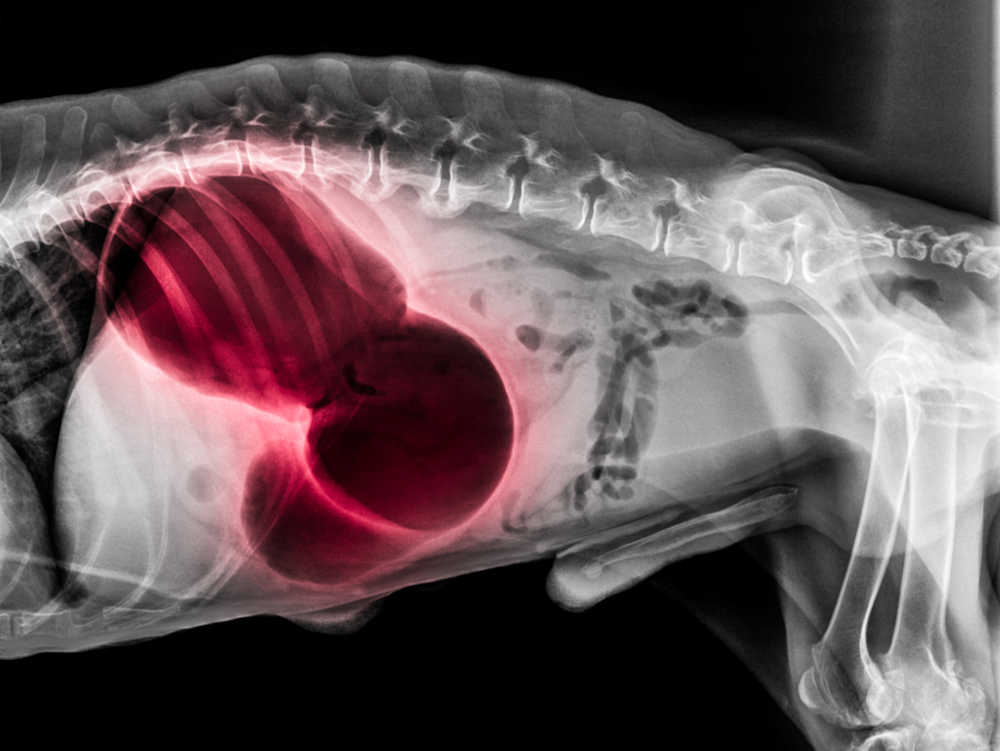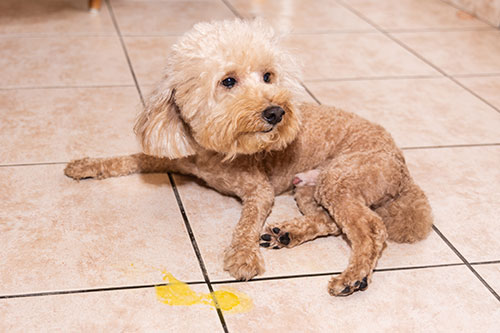
You’re more than likely accustomed to your dog panting; it is a normal reaction after all. However, when you add diarrhea to their panting, it can be anything but normal. As a veterinarian, I’ll tell you that separately both panting and diarrhea have a lot of potential causes. But what about when the two signs are seen together? Read on to find out what may be the cause of a dog that pants and has diarrhea.
Overview of simultaneous panting and diarrhea in dogs
When trying to figure out the cause of panting and diarrhea in dogs, it’s important to start with the causes for each individual sign. From there, you (and your vet) will be able to cross reference to see which causes are listed in both columns. Then you can decide which treatment is best to get your pup’s breathing and bowels back to normal in no time.
Top reasons causing simultaneous panting and diarrhea in dogs
For a quick and dirty list of causes for panting and diarrhea in dogs listen to this: Panting is basically caused by heat, pain (discomfort), exertion, or respiratory issues. Diarrhea is most often the result of faster transit times through the digestive system from some disturbance found there. Okay, let’s put those two together.
1. Stress
Your pup may seem happy-go-lucky, but that may not necessarily be the case. Instead, your dog may be experiencing stress that leads to the release of cortisol which increases the respiratory rate (panting) and inflammation, potentially in the intestines, creating diarrhea. Dogs may also not want to eat, may hide more or become clingier, they may be jumpy or you may see changes in their behaviors and weight loss.

To help this, you’ll want to start by trying to identify your dog’s stressors, if possible. Keep in mind it could be something as small as a new squirrel family in your backyard or as big as a new baby in the house. Offer them a safe, quiet place to retreat and make sure they get lots of one-on-one attention. Some high-stress dogs may require medication to keep their panting, diarrhea, and other signs under control.
2. Digestive issues
This is a broad cause that encompasses many possibilities. Infections, parasites, foreign objects, diet, and chronic inflammation can all contribute to feces moving through the digestive system at rapid speeds-a main mechanism of diarrhea. They can also make a pup feel yucky, painful, and uncomfortable-main mechanisms for panting.
There may also be vomiting, not eating, weight loss, lethargy, fevers, stomach pain, and drooling to accompany the panting and diarrhea.

Be sure to find a high-quality diet and stick with it. No sudden changes. Get your dog vaccinated and dewormed, avoid sick animals or areas where sick pups have been. Prevent your pup from eating things they shouldn’t by locking up your garbage, supervising play with toys, and keeping your house picked up in general.
Depending on the cause, dogs may need supportive care, such as fluids, anti-vomit and anti-diarrheal medications, antibiotics, surgery to remove foreign bodies, or life-long anti-inflammatories.
3. Stomach pain
It’s true that some of the digestive issues we just talked about can also cause stomach pain, but here are a few more that create a significant amount of pain without infections, etc. As we know, pain can be a cause of panting, and something affecting the digestive tract can lead to diarrhea. So, here you go: Gastric Dilatation-Volvulus, or bloat, is when the stomach fills with air and then twists around itself1. As you can imagine, this is very painful and the disturbance can cause diarrhea. This is an emergency (view our bloat timeline chart) that occurs most frequently in large-chested dogs that exercise following eating.
GI obstructions are another condition that can lead to panting and diarrhea. Foreign bodies or undigestibles can become lodged in the stomach or intestines, leading to pain and diarrhea. Dogs may also not eat, be vomiting or have weight loss. Some obstructions will move through with a little fiber while others will need surgery.

Then, of course, your dog can have an injury to the digestive tract that can create panting, led by pain, and diarrhea. Foreign objects or other trauma can be the culprit. Dogs may also be vomiting, have bloody diarrhea, bloating, or other signs of trauma.
4. Pancreatitis
The pancreas is an accessory organ to the digestive tract because it produces enzymes that help breakdown things like fats. It can become inflamed, creating pain and issues with the intestines and digestion.
Pancreatitis is often caused by eating high quantities of fat, but can also be related to genetics and breed. Dogs may also be vomiting and not eating along with panting and diarrhea.

Treatment includes supportive actions, including fluids, anti-vomit meds, antibiotics and pain medications((https://www.merckvetmanual.com/digestive-system/the-exocrine-pancreas/pancreatitis-in-dogs-and-cats)).
5. Heatstroke/overexertion
When the ambient temperature is too hot or a pup has been physically working too hard, they are at risk of developing heatstroke, or at least overexerting themselves. Both are serious issues, with heatstroke requiring immediate attention. Look for excessive panting, diarrhea, vomiting, drooling, weakness, and even collapse((https://www.vet.cornell.edu/departments-centers-and-institutes/riney-canine-health-center/health-info/heatstroke-medical-emergency)).

You’ll want to immediately start cooling your dog with heatstroke with cool washcloths or wet towels and get them in a cool environment. Then, get them to the vet. For dogs with overexertion, the same goes. Let them rest in a cool spot and help cool them similarly until their body temperature and respiratory rate is back to normal.
Is panting and diarrhea in dogs a reason to be worried?
When your pup is showing two coinciding signs, such as panting and diarrhea, it means there’s more than likely something going on that needs attention. Again, panting can be a sign of overheating, pain, or exertion, while diarrhea can be a sign of issues affecting the digestive tract. Those two together could be potentially serious and should be looked at by your vet.
Can I wait and see?
If you know that your dog has been overly stressed lately, or that they may have out done it during playtime, you may give them a chance to relax, cool down, and destress. Try to remove the major stressor from their life, while giving them a safe place to be.
However, if neither of these apply to your pup, or if they are showing other signs of vomiting, fever, severe pain, or not eating, see your veterinarian.
What can you do at home to help a dog who is panting and has diarrhea?
When a dog’s panting and diarrhea are related to stress, there are a few at-home treatment options to try before going to the vet.2
- Of course, if possible, try to remove what is stressing them out. If it’s the mailman, put your dog in their safe place when he’s due to show up every day. Offer them rewards and praise while he’s making his delivery, and then let your pup out once he’s gone.
- If you can’t remove the issue, you may again rely on the safe place. Make it a quiet, out-of-the-way area where your pup can retreat when they feel the need.
- One-on-one time goes a long way in helping stressed dogs. Make sure they get lots of exercise and mental stimulation as well.
- Behavioral training may help some dogs. Talk to your vet or a behavioral specialist about which method is best for you.
- Use some stress reducers like white noise machines or music in the background, Thundershirts, or pheromones. Some dogs may require prescription medications, so as a final resort, see your vet to rule out medical issues or to get something a little stronger.
- ThunderShirt is the #1 vet recommended calming wrap & already used by millions of dogs to help calm anxious behaviors!
Thundershirts may help a dog that has noise phobias, such as thunderstorms or fireworks, by hugging them to provide comfort. It doesn’t work for every dog, but some really respond to these along with a quiet, secluded place. The trick is to make sure you get the Thundershirt on before the noise starts.
Another option is calming dog collars that release pheromones similar to those released by a mother dog to calm her puppies. Dogs can wear these collars all of the time or only during times of high stress.
When to visit the veterinarian for a dog that pants and has diarrhea
We just ran through potential ways to help your dog handle stress that may be causing panting and diarrhea, but what about all the other causes? Truth be told, you’re better off to see the vet if your pup is showing any other signs of vomiting, fever, severe pain, weakness, blood, or not eating. You’ll also want to see the vet if your stress reducing tactics haven’t panned out.
Questions the vet will ask you
Your vet is going to want to know how long your dog has been panting and had diarrhea. They may also want to know what the diarrhea looks like-color and consistency, blood, etc.- as well as any other signs. Be ready to tell them if you’ve tried anything at home, if the signs come and go, or if there’s a chance they ate something they shouldn’t have. Bring a fresh sample of the diarrhea if you can.
Diagnosis and cost
After a thorough exam, your vet may run a fecal test, bloodwork or imaging. This will check for parasites, appropriate digestion, organ function, and foreign objects. This may cost anywhere from $50-$500 or more depending on all that is done.
Treatment and cost
Once your vet gets a diagnosis, treatment can start. This may include fluids and other supportive care, sometimes even hospitalization. It may require cooling your pup down with cold compresses or wet towels, antibiotics, anti-inflammatories, pain medications, or surgery. Look to pay $100-$1,000+ depending on the issue.
Prognosis
Most cases of panting and diarrhea in dogs carries a good prognosis, as long as treatment is given in a timely manner. The big ones to watch out for would be heatstroke or bloat, which if untreated can be life threatening. Of course, any of the above issues, if left untreated, have the potential to become more severe.
Will a vet be able to help over a video call?
A video call may come in handy as an immediate what-should-you-do answer, but your vet will more than likely want to see your pup in person. They need to get their hands on them for a more accurate diagnosis and treatment.
FAQs
Why do dogs pant when they are sick?
Panting while sick may be a result of pain or discomfort, overheating from a fever, or stress from not feeling well. The specific reason that your sick dog is panting will need to be determined by a vet.
Are senior dogs more likely to pant and have gastrointestinal issues?
Senior dogs may be more prone to digestive issues, since digestion can become less efficient as a dog ages. However, problems with foreign bodies and stomach upset from eating something they shouldn’t is more often a younger dog issue.
- https://www.acvs.org/small-animal/gastric-dilatation-volvulus/ [↩]
- https://www.petmd.com/dog/general-health/how-to-calm-your-dog-naturally [↩]
Disclaimer: This website's content is not a substitute for veterinary care. Always consult with your veterinarian for healthcare decisions. Read More.













Be the first to comment